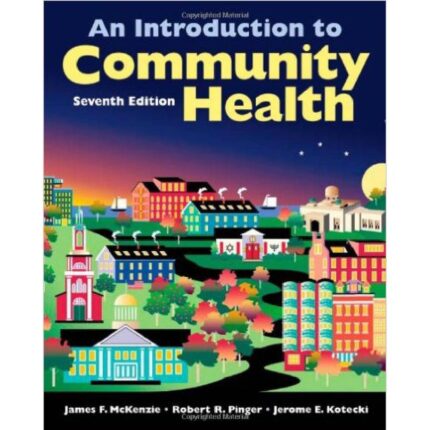Mosby’s Respiratory Care Equipment 9th Edition By J. M. Cairo – Test Bank
Chapter 11: Sleep Diagnostics
MULTIPLE CHOICE
1.Which of the following brain waveforms are present during wakefulness?
1. Alpha waves
2. Beta waves
3. Relatively low-voltage, mixed-frequency waves
4. Delta waves
a. 1 and 2 c. 3 and 4
b. 2 and 3 d. 1, 2, and 4
ANS: A
An electroencephalogram shows that alpha waves and beta waves are present during wakefulness and diminish as the sleeper’s electroencephalogram converts to relatively low-voltage, mixed-frequency waves. Delta waves are present during slow-wave sleep or the deepest stages of non-REM sleep.
PTS: 1 REF: Page 346
2.Stage 2 non-REM sleep is characterized by the presence of which of the following?
1. Relatively low-voltage, mixed-frequency waves
2. Sleep spindles
3. Delta waves
4. K-complexes
a. 1 and 3 c. 1 and 4
b. 2 and 4 d. 2, 3, and 4
ANS: D
Stage 2 non-REM sleep is identified on a sleeper’s electroencephalogram by the appearance of sleep spindles and K-complexes. Relatively low-voltage, mixed-frequency waves occur during non-REM stage 1 sleep. Delta waves are present during slow-wave sleep or non-REM sleep stages 3 and 4.
PTS: 1 REF: Page 346
3.Which characteristics are associated with REM sleep?
1. Lower level tonic activity
2. High-voltage, low-frequency waves on an electroencephalogram
3. Absence of tonic activity on an electromyogram
4. Often absent responsiveness to external stimuli
a. 1 and 2 c. 1, 2, and 4
b. 3 and 4 d. 2, 3, and 4
ANS: B
Absence of tonic activity on an electromyogram and an often absent responsiveness to external stimuli are associated with REM sleep. Lower level tonic activity on an electromyogram and high-voltage, low-frequency waves on an electroencephalogram are indicative of non-REM sleep.
PTS:1REF:Page 346, Table 11-1
4.Sleep spindles occur at a frequency of ____ cycles/s.
a. 4 to 7 c. 14 to 16
b. 9 to 13 d. <3.5
ANS: B
Sleep spindles are waveforms with waxing and waning amplitude that occur at a frequency of 9 to 13 cycles/s.
PTS: 1 REF: Page 346
5.The age at which infants first exhibit the classic sleep stages seen in adults is ____ months.
a. 6 c. 12
b. 9 d. 18
ANS: C
By 12 months of age, infants exhibit the classic sleep stages seen in adults.
PTS: 1 REF: Page 348
6.During a typical night of sleep, a normal adult sleeper cycles between non-REM sleep and REM sleep at approximately every ____ minutes.
a. 30 to 60 c. 90 to 120
b. 60 to 90 d. 120 to 150
ANS: C
During a typical night of sleep, a normal adult sleeper cycles between non-REM sleep and REM sleep approximately every 90 to 120 minutes.
PTS: 1 REF: Page 348
7.Normally, the number of cycles of sleep stages that occur per night is ____ cycles.
a. 4 to 6 c. 8 to 10
b. 6 to 8 d. 10 to 12
ANS: A
Normally, 4 to 6 cycles of sleep stages occur per night.
PTS: 1 REF: Page 348
10. Which sleep stage(s) is (are) characterized normally by irregular breathing patterns with short, central periods of apnea and inhibited rib cage muscles and upper airway muscles?
a. Stage 1 sleep c. Stages 3 and 4 sleep
b. Stage 2 sleep d. Rem sleep
ANS: D
REM sleep is characterized by the following physiologic effects on respiration: irregular pattern of breathing; short, central apneas; variable and elevated PaCO2 (2-8 mm Hg above wakefulness); inhibited rib cage muscles; inhibited upper airway muscles; decreased chemoresponsiveness; and high threshold of arousability to respiratory stimuli.
PTS:1REF:Page 348, Table 11-2
11.Which statements are true concerning non-REM sleep?
1. Early stages predispose a person to apneic periods.
2. PaO2 levels decrease by 5 to 10 mm Hg.
3. Minute ventilation increases by 1 to 2 L/min during stages 3 and 4.
4. The amount of time spent in these stages is less than 50% of the total sleep time.
a. 1 and 2 c. 1 and 4
b. 3 and 4 d. 2 and 4
ANS: A
The reduction in respiratory drive that occurs during the early stages of non-REM sleep (stages 1 and 2) predisposes the person to apneic periods during fluctuations between being awake and asleep. With the establishment of non-REM slow-wave sleep (stages 3 and 4), nonrespiratory inputs are minimized, and minute ventilation is regulated by metabolic control. Minute ventilation decreases by 1 to 2 L/min compared with wakefulness. As a consequence, PaCO2 increases by 2 to 8 mm Hg, and PaO2 decreases by 5 to 10 mm Hg.
PTS:1REF:Pages 348-349
12.Which of the following constitute the effects of normal sleep on the cardiovascular system?
1. Tachycardia during slow-wave sleep
2. Vasoconstriction during slow-wave sleep
3. Hypotension with significant phasic elevations during REM sleep
4. Slightly decreased cardiac output during non-REM and REM sleep
a. 1 and 2 c. 1 and 4
b. 2 and 3 d. 3 and 4
ANS: D
During REM sleep, there is hypotension with significant phasic elevations in blood pressure. During non-REM and REM sleep, cardiac output is slightly decreased. Bradycardia and vasodilation occur during slow-wave sleep.
PTS:1REF:Page 348, Figure 11-3
13.Standard polysomnography includes which of the following?
1. Esophageal pH
2. Submental electromyogram
3. Electrooculogram
4. Intrapleural pressure
a. 1 and 2 c. 2, 3, and 4
b. 2 and 3 d. 1, 2, 3, and 4
ANS: B
Standard polysomnography includes electroencephalogram, electrooculogram, submental electromyogram, tibialis electromyogram, breathing pattern, SpO2, PCO2, and electrocardiogram. Intrapleural pressure and esophageal pH are special procedures that may be required after polysomnography.
PTS:1REF:Page 350, Table 11-4
14.Monitoring of respiratory effort during polysomnography may be accomplished by using which of the following?
1. Impedance pneumography
2. Pneumotachograph at airway opening
3. Strain gauge belt around the abdomen
4. Respiratory inductance plethysmography
a. 1 and 2 c. 2, 3, and 4
b. 3 and 4 d. 1, 2, 3, and 4
ANS: D
All of the above-listed equipment can be used to assess and measure respiratory effort during polysomnography.
PTS: 1 REF: Page 350
15.The submental electromyogram electrodes are placed in which of the following positions?
1. One on the center of the chin
2. Two along the jawline, 3 cm apart
3. Two on the hyoid bone lateral to each other and 2 cm apart
4. One on either side of the chin, between the chin and hyoid bone, 2 cm apart
a. 1 and 2 c. 2 and 3
b. 1 and 4 d. 3 and 4
ANS: B
Three electrodes are typically affixed to the chin with tape. Two of these electrodes are placed between the tip of the chin and the hyoid bone, lateral to each other and 2 cm apart; a third electrode is placed in the center of the chin.
PTS: 1 REF: Page 352
16.REM sleep is identified by which of the following measurements?
a. Electrocardiogram c. Electromyogram
b. Electroencephalogram d. Electrooculogram
ANS: D
The electrooculogram records eye movements during sleep and allows the clinician to differentiate non-REM sleep states from REM sleep states. An electromyogram records arousal responses and sleep movements. An electroencephalogram measures brain wave activity during sleep. An electrocardiogram measures cardiac activity.
PTS: 1 REF: Page 353













Reviews
There are no reviews yet.